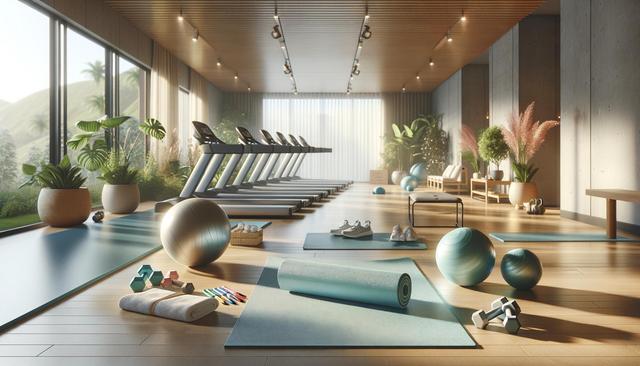The Growing Popularity of Senior Fitness
In recent years, more seniors are returning to the gym, embracing an active lifestyle that emphasizes both physical and mental well-being. This shift is largely due to the increasing awareness of the benefits of movement later in life, and the development of programs specifically designed for older adults. These tailored initiatives address common concerns such as joint health, balance, and cardiovascular endurance, all while creating an encouraging and age-friendly environment. As a result, seniors are getting active again with enthusiasm and consistency.
Fitness centers are responding by offering sessions that focus on low-impact exercises, stretching routines, and strength training adapted to the needs of aging bodies. Many gyms now feature lighter weights, resistance bands, chair yoga, and aqua aerobics to ensure that seniors can participate safely and effectively. These modifications not only reduce the risk of injury but also help maintain mobility and independence, which are central goals for many older adults.
What’s more, these programs are often led by trainers who specialize in senior fitness, ensuring workouts are both safe and effective. This personalized guidance makes a significant difference in motivation and results, encouraging consistent participation and long-term health benefits.
Physical Benefits of Staying Active Later in Life
Exercise at any age has well-documented health advantages, but for seniors, the benefits can be particularly impactful. Regular physical activity helps reduce the risk of chronic diseases such as heart conditions, diabetes, and osteoporosis. Additionally, movement improves flexibility, posture, and coordination—important factors in preventing falls, one of the most common causes of injury among older adults.
Some of the physical benefits of senior-focused gym programs include:
- Improved cardiovascular health
- Increased muscle strength and bone density
- Enhanced balance and coordination
- Better mobility and joint function
Many seniors also find that exercising reduces pain from arthritis and other age-related conditions. The key is consistency and gradual progression, which is why individualized programs are so effective. By incorporating fitness into their weekly routine, seniors are not only extending their lifespan but also improving their quality of life.
Mental and Social Advantages of Group Fitness
Beyond the physical benefits, participating in fitness programs can significantly enhance mental health and emotional well-being. Seniors often face challenges such as loneliness, depression, or cognitive decline. Group fitness classes provide an opportunity to socialize and build a sense of community, making exercise a social activity rather than a chore.
Staying active can also stimulate brain function. Activities that involve coordination or learning new movements engage cognitive processes, which may help delay memory-related issues. In this way, fitness centers serve a dual role—offering a space for physical exercise and mental stimulation.
Social interaction during classes helps seniors feel connected and supported, which can be just as important as the workout itself. Regular engagement in these settings promotes a positive outlook and encourages ongoing participation.
Customized Programs and Professional Support
Fitness centers that cater to seniors typically offer a range of programs customized to various fitness levels and health conditions. These programs often begin with a personal assessment to determine an individual’s capabilities, goals, and any limitations. Trainers then develop a plan that aligns with those needs, monitoring progress and making adjustments as necessary.
Some examples of popular senior-focused classes include:
- Chair-based strength and mobility sessions
- Balance and fall prevention workshops
- Gentle yoga and flexibility training
- Water aerobics and swimming programs
Having access to knowledgeable staff who understand the unique needs of older adults makes a significant difference in outcomes. These professionals not only guide exercise routines but also educate participants on health topics, injury prevention, and lifestyle habits that support overall wellness.
This level of care and attention helps seniors feel confident and safe in their fitness journey, encouraging long-term commitment and better results.
Creating a Safe and Welcoming Environment
One of the most important aspects of encouraging seniors to return to the gym is creating an environment that feels welcoming and safe. Fitness centers have adapted their facilities by adding features such as non-slip flooring, accessible equipment, and well-lit spaces. These changes make it easier for older adults to navigate the gym and feel comfortable during their workouts.
In addition to physical accommodations, many centers foster a culture of inclusivity and encouragement. Staff members are trained to be patient, respectful, and supportive, which helps build trust and rapport with senior participants. This kind of environment is crucial in helping newcomers overcome hesitation or fear about starting a fitness routine later in life.
Promotional efforts often emphasize the message that it’s never too late to start exercising. Whether someone is returning after a break or trying fitness for the first time, the gym can become a place of empowerment and growth. This positive atmosphere plays a key role in helping seniors develop a consistent and enjoyable fitness habit.
Conclusion: Encouraging Lifelong Wellness
As seniors are getting active again, fitness centers play a vital role in supporting their journey toward healthier and more fulfilling lives. Through specialized programs, professional guidance, and community support, these spaces promote active aging in a meaningful way. The focus on both physical and mental well-being ensures that older adults can enjoy independence, vitality, and connection well into their later years.
For anyone considering a return to fitness or starting a new routine, senior-oriented gyms offer a thoughtful and accessible path forward. With the right support and environment, staying active becomes not only achievable but also enjoyable and rewarding.




Leave a Reply